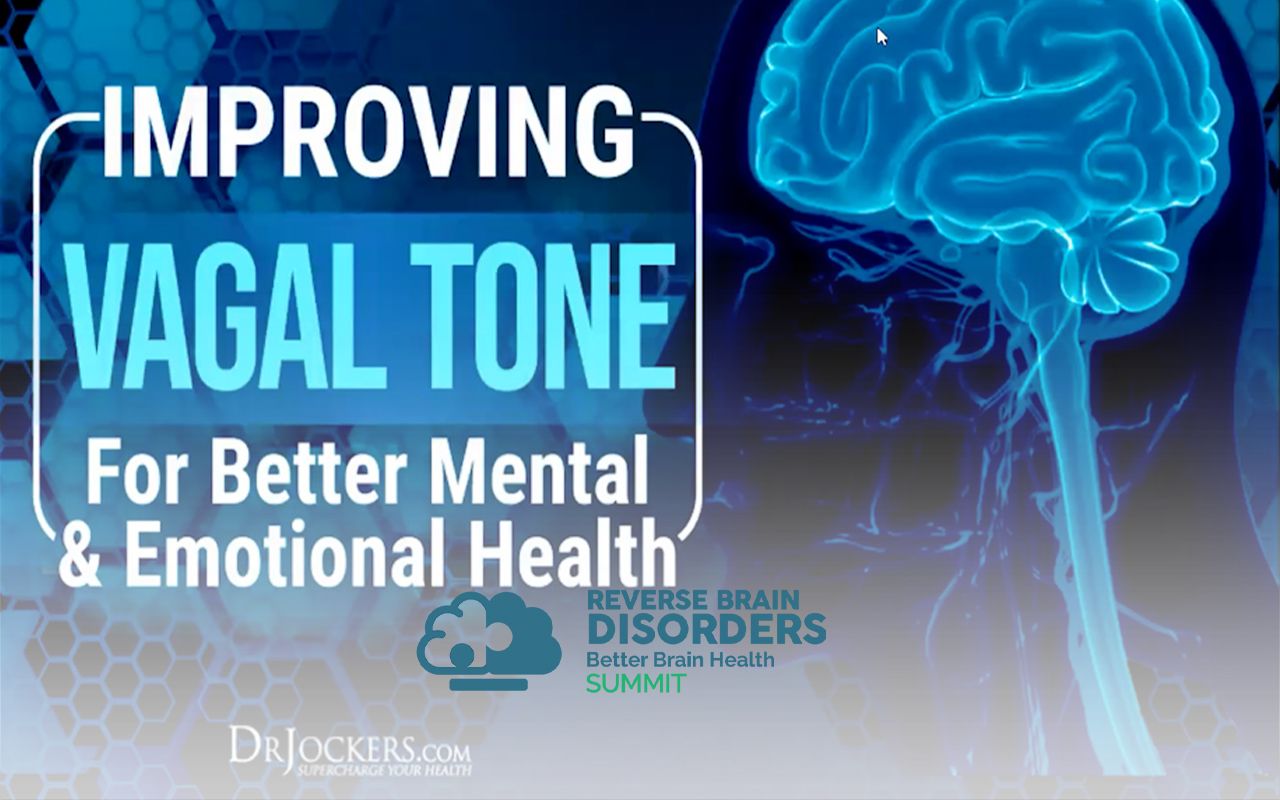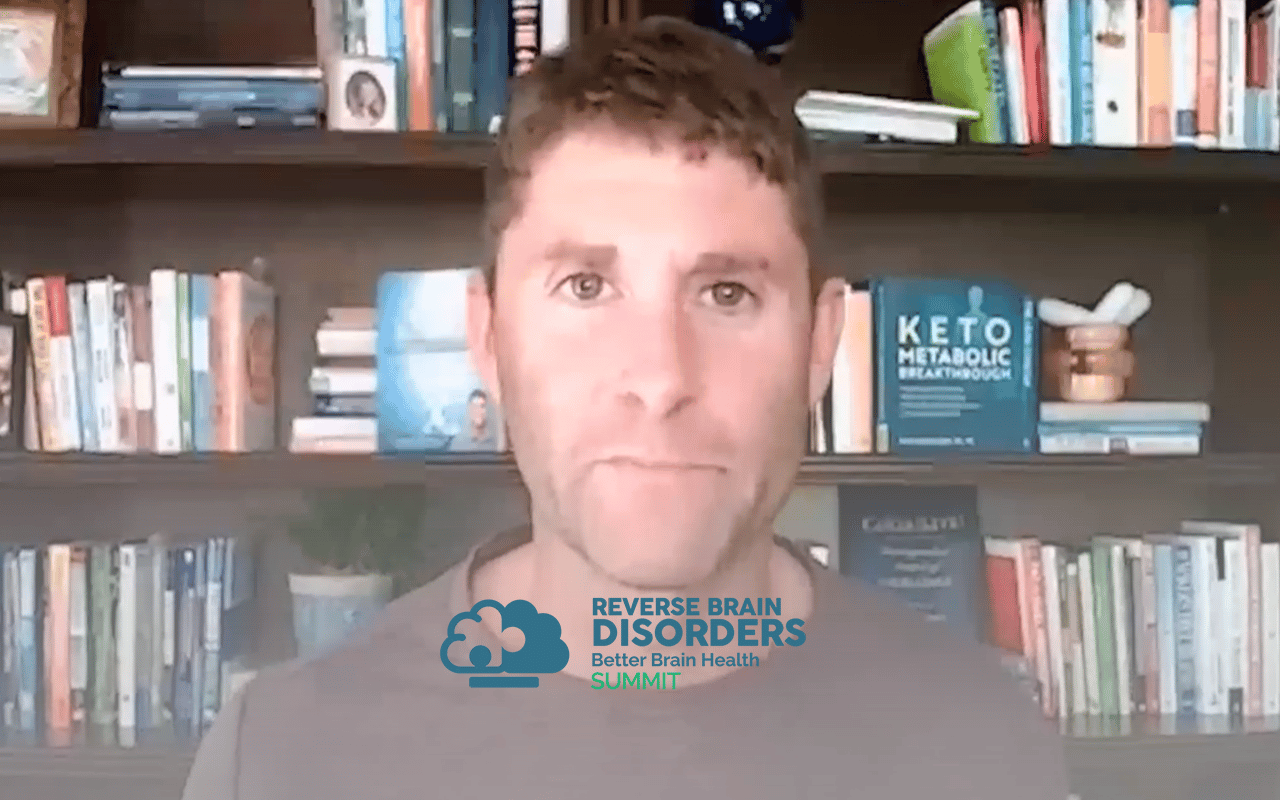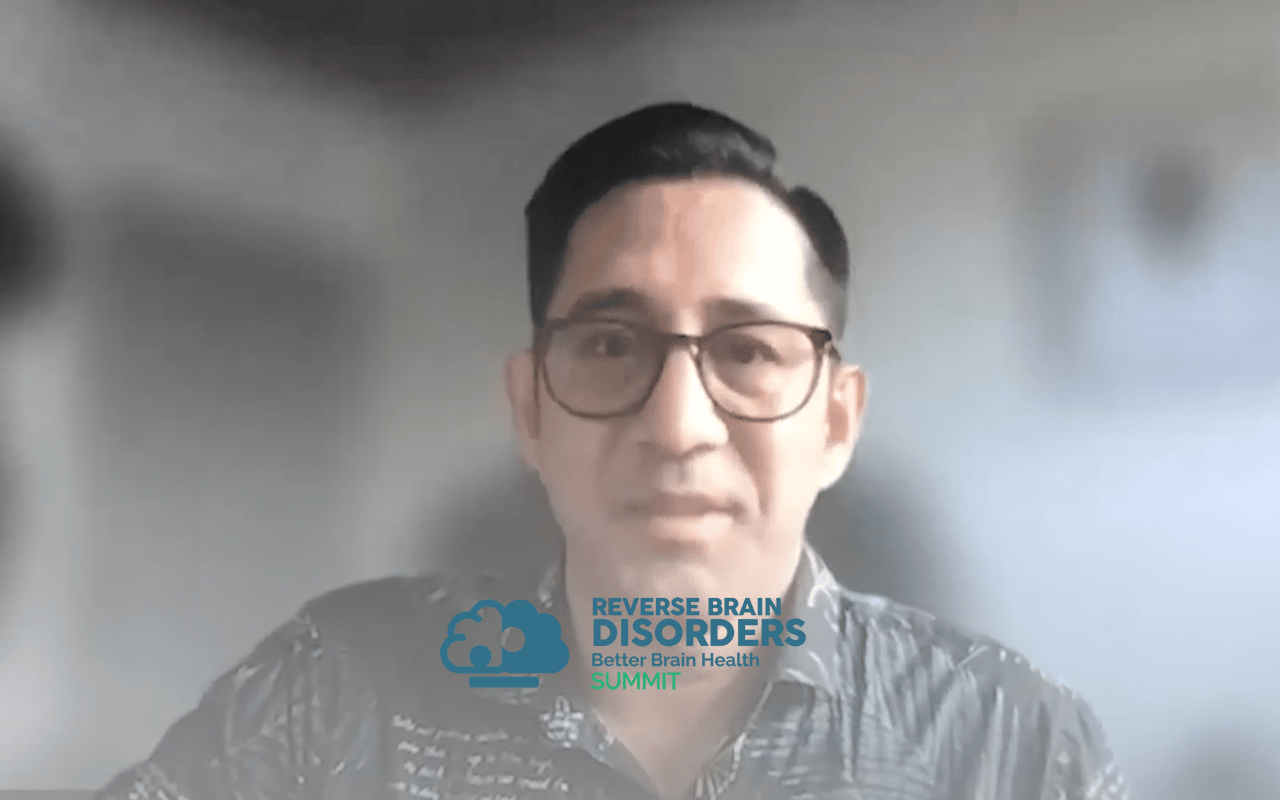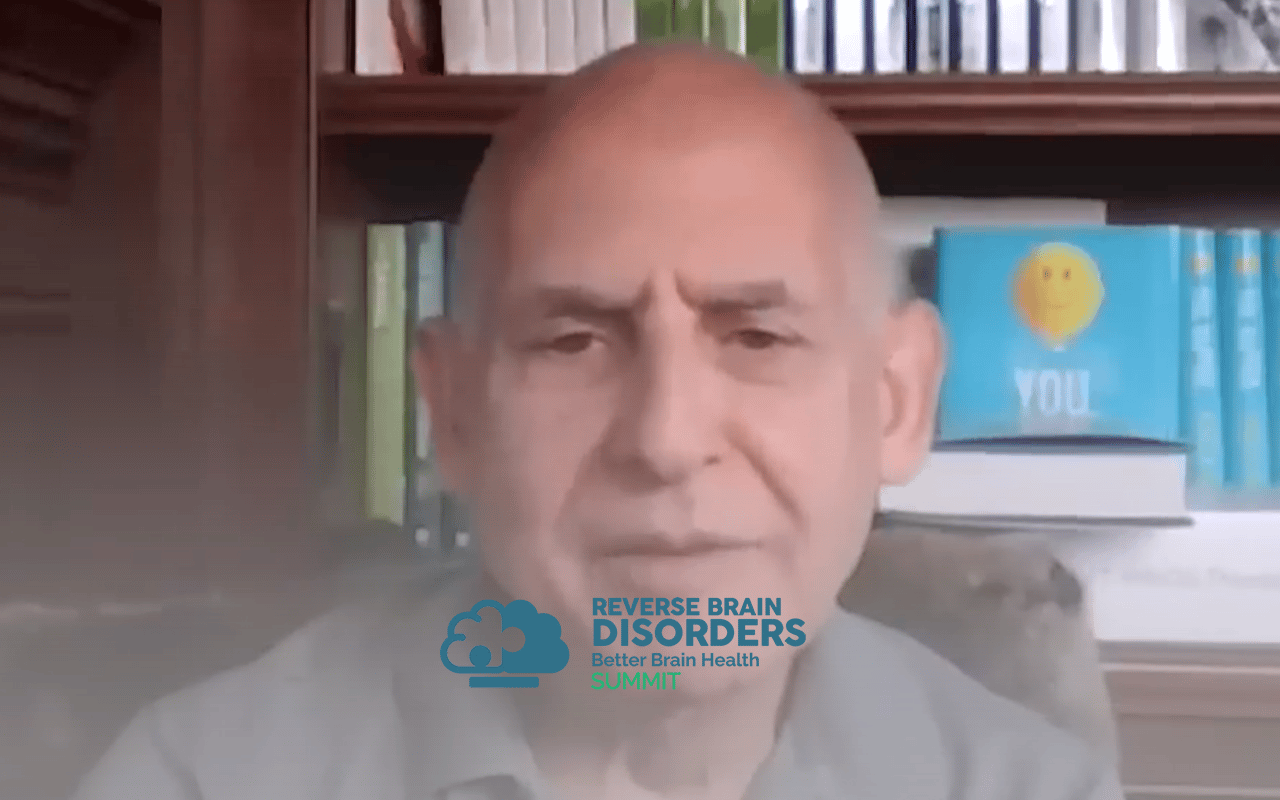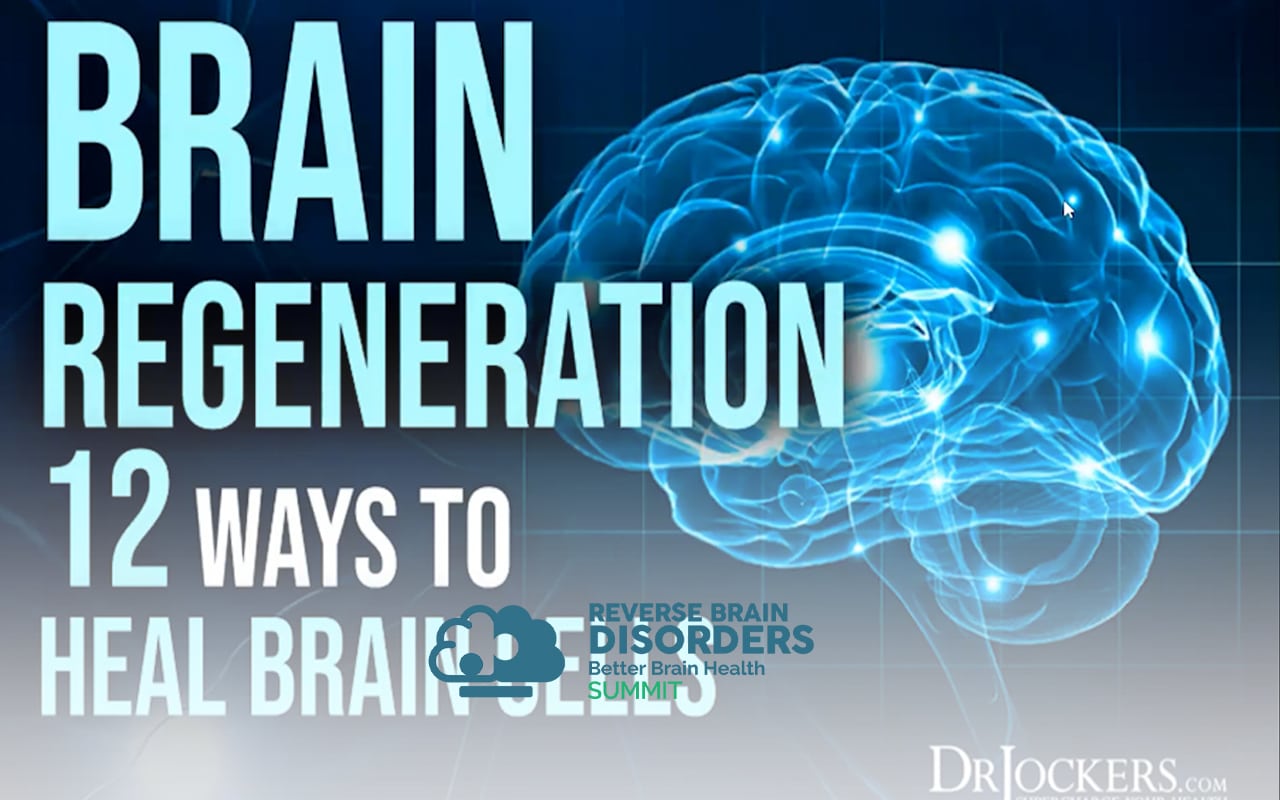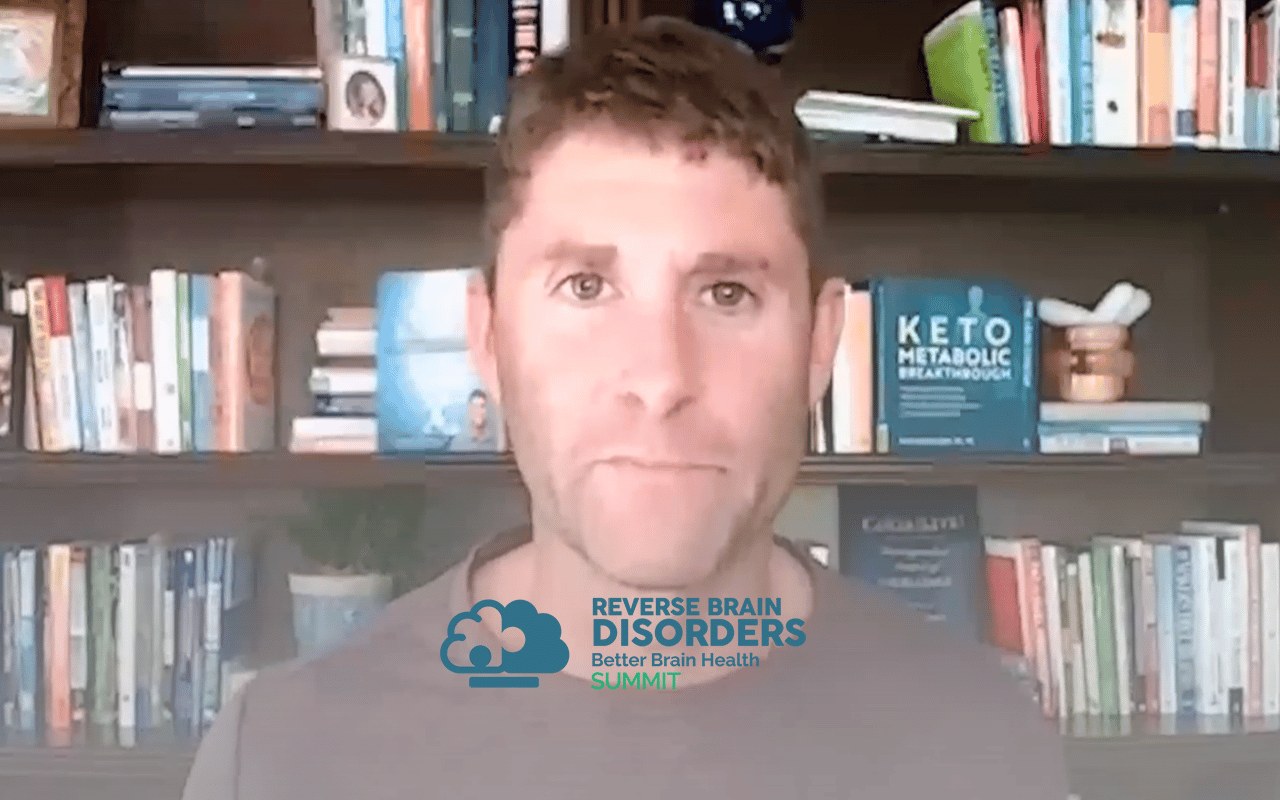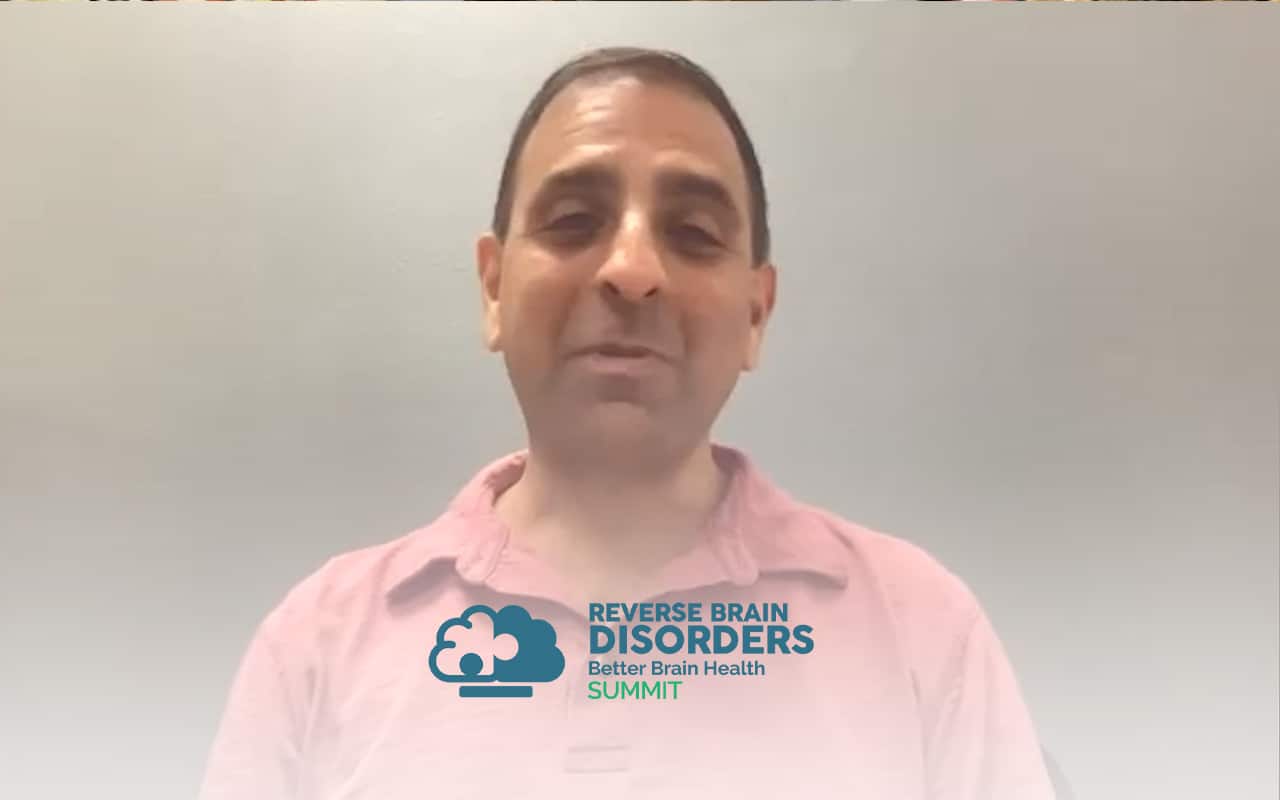Join the discussion below

David Jockers, DNM, DC, MS is a doctor of natural medicine, functional nutritionist and corrective care chiropractor. He is the founder of Exodus Health Center in Kennesaw, Georgia and DrJockers.com, a website designed to empower people with science based solutions to improve their health. Read More
- Major Symptoms of Poor Vagal Tone
- Best Ways to Test Vagal Tone at Home
- Top Strategies for Improving Vagal Tone Naturally
- Best Foods, Nutrients and Herbs for Vagal Tone
David Jockers, DNM, DC, MS
Hey, this is Dr. David Jockers today. And I am talking about how to improve vagal tone for better mental and emotional energy. And so the vagus nerve is cranial nerve 10 and Vagus is actually a Latin word for wandering. And that’s because this nerve actually travels from the brainstem all the way down into our major organ system, our viscera. So it has a lot of different functions. It helps suppress inflammation via the Cholinergic anti inflammatory pathway. It helps decrease heart rate, so it helps kind of like a break on the heart rate helps improve the tone of the vascular system. So the tone would be kind of the muscular activity, its ability to be elastic to you know, increase and decrease blood pressure in general, it has more of a parasympathetic tone to it. The vagus nerve, it’s part of the parasympathetic nervous system. I’m gonna talk a lot more about what that means. But basically it helps relax the blood vessels more so than constrict them and it helps increase gastric juices.
So that means stomach acid bile, pancreatic enzymes. If you’ve been listening to me for any period of time, you know, I’m huge on making sure we get enough stomach acid production. This is a really big issue when it comes to our digestion. We know that our stomach acid needs to be in a very tight ph range. So at rest, it’s usually around 3 to 3.5, neutral ph is around seven, seven is neutral ph So it’s very acidic even at rest, but if we’re going to break down protein, like if we eat a steak, we need to get that stomach acid down around 1.5 to 2.2. So the jump from three down to, you know, 1.5 to 2.2 is actually very energy demanding. And it depends on activation of the vagus nerve to activate the stomach and the parietal cells in the stomach to produce the stomach acid. So very important for that. Also very important for bile production to emulsify fats to be antimicrobial and the small intestine help with nutrient absorption as well as pancreatic enzymes. So very important for gut health is having good vagal tone, liver health. It helps regulate insulin secretion, which is more of a kind of a pancreatic function, but also helps regulate glucose homeostasis in the liver.
So the liver is a main area where we have stored sugar. So if our blood sugar goes down, we were able to increase our blood sugar by breaking down glycogen stored sugar in the liver. And so the vagus nerve helps play a role in regulating that. So we don’t break down too much. We don’t break down too little for some individuals, they break down too much because they have poor vagal tone, so they actually increase their blood sugar too much, you know, between meals as their body is breaking down and creating something called Laconia genesis where we’re breaking down sugar from stored forms and their blood sugar goes up and they keep their blood sugar up too much because they have poor vagal tone for the mouth. It has to do a taste information. And it’s also very important for gag reflex swallowing and coughing and that’s important to remember as we go forward. And there’s certain exercises we can do to help improve vagal tone, utilizing some of these uh some of these reflexes. Blood vessels again helps decrease vascular tone, kind of helps monitor that vascular tone and lower blood pressure helps keep anxiety and depression at bay. It opposes the sympathetic response to stress and that’s an important thing to remember.
So healthy vagal tone, it means that we are in a calm and peaceful mindset and mood. We have good digestion and good bowel movements. We have a healthy pulse rate, healthy blood pressure, healthy blood sugar and healthy body weight. And we have normal speech and swallowing ability. We have all those things, we’re feeling very calm, very joyful. We have good sleep as well. It’s not on this, but vagal activity is important for good. Really deep restorative sleep as well as good digestion and bowel movements. Good pulse rates and pulse isn’t too high. It’s not too low, good, good blood pressure. A lot of people, you know think they have good blood pressure but it’s actually too low and that’s a sign that we may have too strong a parasympathetic tone. And I’m gonna go through that here shortly as well. And then healthy blood sugar and body weight. So we have poor vagal tone, we might have episodes of hypoglycemic to where our blood sugar just drops too low. We get hungry, irritable, have major cravings, you know different issues like that.
Or it might have too much too high blood sugar and have hyperglycemia and high insulin and insulin resistance and excess visceral fat. So all these things are important to remember normal speech swallowing ability. Again that activation of the palate and the larynx very important for vagal. That’s a very important vagal function. So that’s important as well. You’ll find some people that have trouble swallowing pills for example, or they have a heightened gag reflex where it’s like a lot of things just make them gag. The texture of certain foods, make some gag, they can’t swallow certain things. That could be a sign of poor vagal tone. So all good things to remember. And we’re looking at the nervous system, you know for for forever. We’ve broken it down into really like two major parts of what we call our autonomic nervous system. Autonomic means automatic rights. Like the part of our nervous system that we don’t have to think about. We don’t have to think about our body digesting food. We don’t have to think about our heart rate. You know our lungs are taking in and X.
You know, exchanging oxygen and carbon dioxide. We don’t think about these things. But it’s all being done and that’s being done by that automatic part of our nervous system. Parasympathetic is kind of like the brakes, sympathetic is the gas rights, the fighter flight, its survival, its activation when we exercise. We’re activating our sympathetic nervous system when we’re feeling a lot of pressure under stress. You know, somebody cuts us off on the road. You know, we feel at risk. You know, we feel scared. That’s all gonna be sympathetic nervous system activity. Parasympathetic. So the brakes that helps us put us in a relaxed state when we’re in a relaxed state we can really heal regenerate cells and can digest food, digesting food is very energy demanding. And so we are not putting much energy into digestion when we are in fight or flight. And an example of this is you know, when you were growing up, your mom probably told you don’t go swimming, you know, wait 45 minutes after you eat before you go swimming.
Why is that? Because if you went swimming right after you ate a big meal, you would get a cramp and that’s because swimming or any sort of, you know exercise is sympathetic driven and that brings oxygen nutrients. Blood flow to the skeletal muscles and away from the digestive track. When we eat a meal we need to get the blood flow and the activation into our digestive track so we can produce enough stomach acid bio pancreatic enzymes so we can really break down digest that meal. And so Children usually can go through that process pretty quick. So that’s why it takes 45 minutes it would eat a meal 45 minutes. So we get out of the stomach into the small intestine. We have released the majority, if not all, of the digestive juices needed to break down that meal and we wouldn’t need to have the vagal nerve activity. And therefore we can now get into sympathetic mode. Where were you know, doing some sort of exercise for adults? Oftentimes we’ve gotta wait a few hours. I know for myself if I had a big meal, 45 minutes will not be enough before I go and swim. So usually I try to do that several hours between meals.
You know, to make sure that I’ve gotten all the parasympathetic tone that I need to digest the meal well and then go into sympathetic mode. And this is also why I like to exercise on an empty stomach typically fully fasted for, you know, a long time. Oftentimes I’ll work out around midday and I haven’t eaten since you know, dinner the night before and I feel really good because you know, I I don’t need to have the parasympathetic tone. I can have the activated sympathetic tone, get a great workout in and then, you know, shortly after I finished working out, eat and while I’m eating, you know, being a more relaxed state and do things that are not, you know, overly stressful after I eat. So that way I can really focus my physiology can focus on parasympathetic dominance and producing the digestive juices. I need to really digest my meal effectively. So that’s important. Remember, and this is a great quote from Dr. Bruce Lipton. You can’t be in growth and protection at the same time. So parasympathetic is about growth, sympathetic is about protection, right? So it’s important now to add a little bit of a confounding factor.
There’s something called the poly vagal theory. It’s a little bit, you know, advances this idea of fighter flight versus rest and digest and it breaks the vagal tone into two major systems. We have the eventual vagal nerve which is ventral basically means in a you know, physiology perspective. It’s kind of the front, the front part of the vagus nerve has to do more with being engaged, grounded, compassionate, mindful, it’s kind of the state of thriving sympathetic nervous system. Again, super important really. Key for adapting to stress. Right, adapting to stress, exercise, moving our body quickly. We need higher amounts of blood sugar because we need quick energy. You know, we may not have the presence of oxygen because we have to move quickly, we need to be able to react quickly. So sometimes, you know, fight or flight, you’re thinking anger, you know, some of these more aggressive behaviors uh and that’s normal when we’re in sympathetic nervous system activity, it gives us a competitive drive oftentimes but we should only be in that sympathetic activation for short periods of time. We shouldn’t be in there for very long, just short periods of time.
Like if we’re exercising or if we’re adapting to a sudden stressor and then we’re able to move out of that and hopefully back into parasympathetic tone if we don’t if we’re in that sympathetic fight or flight for a long period of time, eventually our body moves into the dorsal portion of the vagus nerve. The unmyelinated myelination is where we have these myelin sheaths around the nervous system and that helps conduct stronger, faster neurological activity. So the annihilated portion of the vagus nerve is the part associated with shutdown and gives us kind of like a numb, depressed, hopeless disassociated response. So when somebody hits a point of depression, typically their body has been in a state of fight or flight for a longer period of time than they should. They’ve kind of hit their point of you know, overloading their system and now they’ve moved into this state of shutdown or the dorsal portion of the vagus nerve which is kind of like a hibernation type of mode, right? Like just kind of wants us to rest. I mean think about it like when you have the flu or something like that, you know, you really can’t think straight, you just kind of want to rest and relax your body. You know, and you know, you’re not you’re not feeling your best, right? So it’s kind of your system’s overloaded. Well, some people are like that when they don’t have the flu, they’re just they’ve been in fight or flight for so long that now they have hit the shutdown portion. So this is another slide here that helps us understand this. So the eventual vagal activation kind of your attitude is I’m feeling at ease and can manage whatever comes my way.
I feel empowered and connected. I see the big picture, big picture and connect to the world and people in it. This is really a state of thriving and that’s where we want to be most of the time. We’re not gonna always be there. Certainly we need sympathetic activation at times and in fact actually can be very healthy. But we want to glide between the ventral vagal activation and sympathetic activation for short periods of time and as much as possible. We want to avoid dorsal vagal activation. You know, most people experience some level of dorsal vagal activation at times during very stressful seasons of their life, but hopefully it’s just for a very short period and were able to get back into, you know, the state of eventual vagal activation and thriving. So again, the sympathetic activation. The attitude is I’m getting overwhelmed and having a hard time keeping up. I feel anxious and irritated, the world seems dangerous, chaotic and unfriendly. And then you know, again, hopefully we get that balanced and get into ventral vagal activation. If not, we move into the dorsal vagal activation which is the attitude of I’m buried under a huge load and I cannot get out. I’m alone in my despair, the world is empty, dead and dark.
And we’ve probably all experienced people that unfortunately are in this position, maybe ourselves at times and really, you know, super important that we’re doing exercises to help activate proper vagal tone and move us back into ventral vagal activation. So again, you know, the state of thriving is kind of this continuous flux where we get a little bit of sympathetic activation back into parasympathetic, little bit of sympathetic back into parasympathetic. When we have high levels of sympathetic we start moving up, you know, and when it’s present for an extended period of time we move into that dorsal activation where it’s more of a freeze. Right? So we’re kind of body collapse immobility, were not able to really cope with the stress that we’re under its a burnout state of burnout. And you know, it’s not a good place, right? It’s a low endorphin place where we don’t have the endorphins. We have, you know, increased pain threat, you know, increased pain in our system and just were not able to function at our best. And so hopefully, you know, we’re able to get and maintain in that ventral vagal state and that’s what we’re looking for. So yeah, I mentioned how the vagus nerve plays a really key role in this kind of gut brain axis is communication patterns. So the gut is constantly communicating to the brain, the brain is constantly communicating to the gut. The major nerve that’s leading that is the vagus nerve. It’s the communication, bidirectional communication pathway between the gut and between the brain. It helps activate motility sort of moving feces through and it’s the, you know, the different neurotransmitters that are being produced in the gut, interact with the vagus nerve, giving the brain signals as far as what’s happening there in the gut.
And this is why we call the gut, the second brain. There’s a lot of neurotransmitters in there. Lots of sensory information that’s taking place, motor activity that’s taking place and it’s all feed back into the brain through that Vegas through the sensory system of the Vegas. And then of course the Vegas also has the motor end that’s helping activate the gut as well. So whatever is happening, the guts gonna really dramatically impact vagal tone Now, major causes of poor vagal tone, chronic stress and poor sleep really big in our society. Early childhood traumatic experiences most people that are experiencing this this dorsal vagal activity typically have had some major traumatic experiences maybe you know sexual or physical abuse when they were young and so that’s really unfortunate. But that’s a major contributor. Head injuries, concussions, things like that. definitely will throw off vagal tone, poor breathing, mechanics, poor posture, poor breathing, mechanics play a big role. The way we breathe helps to activate or deactivate parasympathetic activity, vagal activity, chronic infections. And we talked about the gut brain.
So chronic infections most of the time in the gut will impact vagal tone as well. Blood sugar imbalances. We talked about how important vagal tone is for keeping blood sugar stable. So for eating foods that cause major blood sugar imbalances that’s gonna throw off, it’s gonna overload the vagal activity to try to balance it and can cause poor vagal tone and then high toxic load toxins, neurotoxins, mycotoxins, So heavy metals, pesticides, herbicides, mold and mycotoxins all dramatically impact vagal nerve activity. Now, a couple of tests we can do for vagal tone, one is called the pupil constriction test. So when a light is shine in the eyes of people should constrict for at least 10 seconds for dilating. So constricting would mean shrink And should hold for at least 10 seconds before it kind of gives out and then dilates, meaning that the pupil gets bigger, right? So it gets smaller holds and then it will get bigger if it constricts. So if it gets smaller and then dilates in less than 10 seconds. Or it fails to constrict and doesn’t even constrict. It all could be a sign of poor vagal tone. So when somebody has height, heightened sympathetic activity.
Oftentimes it will constrict. But it will give out after a few, you know, 456 seconds. You just see it pulsating and then boom give out when somebody is in that dorsal eventual, I’m sorry, dorsal vagal uh tone. Right? When they’re dorsal dominated eventual activity. So there, you know, in that state of burnout, oftentimes it won’t even constrict or it will constrict and blow out right away and just dilate right away. Now, second thing is heart rate to breath rate comparison. So, and and for the people of the construction test really just take like a little penlight kind of shining it near the person’s eyes and it’s mildly irritating, right? So irritating kind of the eye, but should be able to hold that for about 10 seconds. So, that’s kind of the standard their heart rate to breath rate comparison. Normal heart rate is 6200 beats per minute. Normal breath rate is 12 to 20 breaths per minute. This is roughly a 5 to 1 ratio. The ratio is more than 5 to 1. So if the heart rate is higher, Then the breath rate, it could be a sign of poor vagal tone. So let’s say your heart rate is 80 and your breath rate is 12, right? That ratio would be more than 5-1. So your heart rate is just it’s much higher than it should be for the amount of breath you’re taking.
That’s a sign of poor vagal tone. Heart rate variability. This is something you can do. Like there’s certain tests, there’s also like kind of things that you can wear. Like the ordering, things like that. That will tell you your heart rate variability and that’s the variance between heartbeats. That can be measured on various wearable devices. Blood pressure, normal blood pressure level should be between 100 at the top. So systolic should be 100-140 over 70-90 diastolic. If this is abnormally high or low it can be an indication of poor vagal tone. So if your blood pressure is 1 60 over 100 right? Could be poor vagal tone. Obviously inflammation plays a role in that. Now this you know it should be a resting blood pressure, not like a blood pressure you’re taking when you’re exercising then it should be up higher for a lot of people. And like for me I know when I had irritable bowel and I was dealing with H. P. A access dysfunction. My blood pressure would regularly be somewhere around like 100 or like 90/50. It was really really low and that was a sign that I was not getting the sympathetic activations. I was actually in a dorsal vagal activity, right, Which is not where we want to be. So it wasn’t a place where I could heal and that’s because I had got infections. I was living in a home with mold and mycotoxins and I was wearing down my system, I was back in my early twenties. Orthostatic hypotension. This is another thing we can check. This is when blood pressure doesn’t rise quick enough when an individual goes from sitting to standing, which can result in feelings of dizziness and poor balance. This is pretty easy to see. I mean, you can test blood pressure, but really it’s just going from sitting to standing.
So you sit, you stand up, you sit for five minutes, I’ll say, Then you go ahead and stand up. You should feel fine, you should be able to stand up, experience no issue. Just go right into whatever you want to do next. If you feel dizzy and it’s hard to maintain your balance. That’s a sign of Orthostatic hypotension. You’re not getting the vagal activity enough to get the blood pressure to regulate and get more blood flow up into the brain. So that’s an issue. So let’s look at some solutions. The importance of intentional breathing is a great quote by Sheldon. Sheldon Hendler, MD, PhD from the he wrote a book called the oxygen breakthrough. He says breathing is the first place, not the last place. One should investigate when any disordered energy presents itself. So it’s super important. We know slow deep breathing can trigger a relaxation response in the body that slows the heart and reduces stress, breathing through the nose or nasal breathing filters. The air is better for oxygen uptake actually increases nasal nitric oxygen, which helps dilate the blood vessels in the brain. Very, very key for overall neurological activity. The exhale, which slows the heart rate should be longer than the inhale. So we should actually be taking longer exhalations than inhalations. We should keep our shoulders as relaxed as possible. The neck and shoulder muscles shouldn’t be part of the breathing process.
Take a bigger breath by forcing your abdomen to expand as the diaphragm extends, it pushes your ribs out. So just good breathing form in general can make a big difference. Being a state of gratitude. Right? Really? Refocusing your mind on gratitude is super critical for helping healthy vagal tone. People who are grateful have more resilience. They’re able to adapt to stress more effectively. Little things don’t get to them the way they do for people that lack gratitude for people that lack gratitude. It’s almost like for many individuals they’re looking for reasons to be offended. Something happens, they get offended and they dwell on that and by dwelling on that they create more stress. And so they’re activating more of that sympathetic nervous system activity and eventually they’re gonna move from eventual two dorsal vagal activity and get more depressed.
And so we want to really focus on gratitude as much as possible and being an individual that’s grateful. And a couple of tips for that is to keep a daily journal of three things you’re thankful for every day. Daily journal. Three things you’re thankful for, have conversations with your family or your loved ones. People that are close to your friends, whoever it is that’s you know around you the most about things that you’re thankful for each day. Tell someone in your life something you appreciate about them every day, Your spouse, your friends tell them uplift them, encourage them and that will help you and it will help your it will help activate more of your eventual vagal tone, which is that state of thriving. Silence negative. Make an effort not to complain. Again choose to think differently. Now, don’t be offended, don’t look for reasons to complain. Instead look for reasons to be grateful and thankful. Now really focusing in on a good night’s sleep is super important. So these are the things that we want to do for good sleep hygiene. One is avoid caffeine within eight hours of sleeping.
So if you’re going to bed at 10, ideally you’re not consuming caffeine after let’s say 8 p.m. Sorry after 2 p.m. So eight hours. So it will be 2 p.m. You don’t want to eat within three hours of sleeping or exercise within three hours of sleeping because you know eating too late at night is going to interfere with your ability to get into a state of deep sleep and interfere with the key hormones needed for really good restorative sleep and exercising late at night, activates that sympathetic nervous system can throw off your circadian rhythm so you want to exercise earlier in the day. You want to get good sun exposure during the day. That actually helps set your circadian rhythm when you get good sun exposure during the early hours or midday. That actually helps your body produce more melatonin. So you can get great sleep at night after dark. You want to avoid bright light. So you want to turn off all the bright lights in your home ideally just have kind of light, you know very, very mild lighting ideally more of like an orange light or orange bulb that’s not you know not emitting a lot of blue light and you can wear blue light blocking glasses as well. So if you’re on screens, things like that that emit blue light, you’ve got blue light blocking glasses which are kind of orange tinted glasses that make things look more like you know you’re you’re in candlelight or something like that, you want to wind down at nine p.m.
So you shouldn’t have goals that you’re trying to accomplish after nine, you shouldn’t be working, trying to have goals. You can do relax, you know relaxation activities, read books, have a light conversation, listen to some music But nothing that’s gonna get you really, you know, hyped up and over activated, that’s important. And then when you’re going to sleep, keep your room as dark as possible, have your room cool. I like to have an overhead fan, you know, keeping my room somewhere between 65, for me helps me sleep really good. And I use a sleep mask. So I have my room as dark as I can, but then I also put a sleep mask on and that helps block out any sort of tangent light and that’s really key as well. So these are all great tips for good sleep. Make sure you’re laughing, laughing stimulates endorphins. It helps to activate more oxytocin which balances cortisol and other stress hormones. It actually enhances creativity. So the endorphins as well as helps activate and improve neurotransmitter sensitivity in your brain which can enhance creativity, boost anti aging hormones.
So some of our major sex hormones, testosterone oftentimes can be boosted growth hormone when we’re laughing and we’re kind of enjoying ourselves and obviously we just feel significantly better. It connects us to the people around us. So that’s that oxytocin effect. So laughter can be really helpful. Now, some other natural techniques for stimulating the vagus nerve and you know, this is going back to things we talked about with what vagal activity is doing. So singing is actually like humming, chanting, singing are all exercises that have been shown to increase heart rate variability. That’s that kind of tone between each heartbeat and that’s a great measurement. That’s the gold standard measurement of our vagal tone is our heart rate variability. Higher heart rate variability is linked with reduced morbidity and mortality. So reduced risk of disease and death and improved psychological well being and quality of life. So singing can be a really great stimulus for the vagus nerve, laughing. Like I talked about like singing that can increase heart rate variability particularly when it’s done in a group setting. So when you’re laughing with others, that actually is more beneficial than just laughing on your own. Although that can be helpful as well. Gargling.
That seems interesting like just taking water and gargling that actually stimulates the muscles of the palette and has been shown to improve working memory performance and vagal activity. So that can be really helpful. Deep breathing, we know, breathing slowly and deeply activates the vagus nerve, sends messages to the brain that help lower your blood pressure and heart rate. Cold exposure. So exposure to cold dampens the fight or flight response. So it could just be like cold water that you kind of put on your face in the morning or something like that. Could be a cold shower could be you know, doing a you know, cold immersion. Cold water immersion or cryotherapy, All of those things can be really helpful for vagal tone exercise. Just getting good regular exercise now you don’t want to over train, you don’t want too much but getting regular movement so getting out walking, getting your body moving every single day ideally in the sun. Getting sun exposure is super important as well for vagal activity and overall quality of life. Getting out and moving every day and then also doing some resistance training a few days a week like 34 days a week lifting some weights or doing some body weight exercises to help strengthen your body. Very, very good for overall vagal tone and overall quality of life. So that can be really helpful, thoughtful meditation and prayer. Super critical that can help calm your brain, help activate vagal tone so things to be looking to do.
Now eating a healthy diet that is you know gets rid of refined grains, really all grains, all deep fried foods, all your you know processed foods, your grain fed meats, your fast foods, your commercial salad dressings, all the bad oils, the seed oils, corn oil, soybean, safflower, cotton seed peanut oil, your trans fats or partially hydrogenated oils. Getting rid of those things, those things all jack up your sympathetic nervous system, additives, preservatives, artificial sweeteners. Get rid of all that stuff and instead focus on high protein from grass fed pasture fed pasture raised meat, poultry, wild game, wild caught seafood bone broth, vegetable broth. You’re getting good protein from that. eggs, pasture raised eggs. Another good source. Get a lot of healthy fats that’s gonna be your avocados, your extra virgin olive oil, your coconut oil, your grass fed butter, all really good sources of healthy fat. And then get a lot of polyphony calls. You’re going to get those things from lemons, limes, berries, different fruit, non starchy vegetables, herbs like basil, oregano, thyme, rosemary, sage, garlic, onions, chives, ginger turmeric. All super good. And then get some fermented vegetables as well. Apple cider, vinegar, fermented veggies. Sauerkraut, kimchi, things like that.
All really good for gut health and supporting that vagal tone. So that’s what we want to focus on. Their intermittent fasting can be really helpful as well. Take stress off of your system, helps get rid of, helps to modulate your microbiome in a positive way gets rid of excess amounts of primary feeding bacteria and helps the secondary feeders that live deep in the gut mucosa, helps them to thrive. And that’s things like Ackerman’s amusing helium usin. Ophelia means mucus loving and Ackerman’s amusing. Ophelia lives in the gut mucosa can eat the gut mucosa and when we are intermittent fasting it’s been shown to actually increase the quantity of the Ackermann zia. Ophelia and across the board that has been shown to help reduce the risk of metabolic disease and really all cause chronic disease in our system. And one of the things, one of the interesting things Ackerman zia does is it breaks down polyphenols and converts them into something called Euro within a for example and you’re a within a has been shown to break down bad mitochondria within the intestinal cells within the Ontario sites and turn them into good healthy mitochondria to create more, more, stronger, more stress, resilient gut lining and reduce inflammation in the body. So intermittent fasting. One of the best things we can do for vagal tone, gut health, keeping inflammation under control. Simple thing you can do is just an overnight 12 hour fast.
So you don’t eat from seven PM to seven AM. And then as you’re experimenting when you wake up in the morning, drink some water, drink 16-18 ounces of water should be pretty easy to fasten for 14 hours going from let’s say seven p.m. To nine a.m. And then you can experiment with pushing that fast out to 16 or 18 hours. And he may just do it two or three days a week. We call that crescendo or cycle fasting. and for some individuals they just feel their best when they’re fasting 1618 hours. So they’re doing that most days. And for some individuals they feel even better pushing that fast longer going 1920 hours maybe eating to our two meals. And like a four or five hour eating window or even just doing like one meal a day. And that’s something you may do once a week. Like I do, I do one day fast, full 24 hour fast each week, one day for other individuals, especially individuals that are very overweight. They actually feel some of them feel really good just doing this on a regular basis. They only eat one or maybe like, you know, a small, you know, basically like one meal and and roughly like a one hour eating window for some individuals, I’ll do it, you know, over like a two or three hour eating window, but it’s, you know, it’s just very, very compressed eating window and there’s tremendous anti inflammatory benefits there. And there’s also benefits for activating vagal tone, improving vagal tone and improving heart rate variability. When you do that, I mentioned movement, how critical that is. not only for vagal tone, but it improves circulation in general, stimulates lymphatic drainage, enhances tissue oxygenation. So it improves the oxygen extraction uh from the blood into the tissues of the body.
Balance is key brain neurotransmitters reduces stress and tension on the body. That’s kind of the parasympathetic effect, helps improve mood and happiness and enhances mental clarity and memory. So getting regular movement every day ideally, you know, when you’re able to, getting it outside is even better and then doing some resistance training, strength training. I think that’s really important as well to maintain lean body tissue now, a couple of other movements just kind of focused body movements. Some people call this like yoga, some people call it stretching Pilates. You know they’re all components of these focused body movements but stretching, holding certain you know certain movements and certain poses has been shown to help calm the mind improve focus, boost confidence, improve memory, bring happiness promotes positive thinking, reduces headaches, improves you know really all points of quality of life, everybody act that does focus body movements, okay could be tai chi that’s another one. Everybody that’s doing this regularly. Yoga Pilates just stretching you know whatever you want however you whatever you wanna call it tai chi whatever your form of this is they tell me they feel significantly better quality of life is significantly improved.
Obviously it helps them maintain a certain amount of lean body mass, helps strengthen their core. But they also just the brain benefits are incredible chiropractic care. Chiropractic care has been shown to help balance vagal tone, modulates vagal tone and improve heart rate variability. So something I would definitely recommend acupuncture is another modality that can be very beneficial for vagal tone and then magnesium. If there’s one supplement I think about when I think about vagal activity. I think magnesium when you are magnesium deficient that is going to throw off your fight or flight response your ability to adapt to stress and can really put you in a bad place when it comes to vagal tone. So magnesium we know it’s really powerful for stress and anxiety. It helps balance blood sugar stabilizes the major stress hormones like cortisol helps improve gaba levels which is the breaks in the brain to help prevent against you know, irritability, anxiety, worry, you know, all the kind of trouble thoughts, right depressive symptoms helps reduce brain inflammation, improves neural plasticity and BDNF activity and helps detoxify heavy metals.
So magnesium is really key. I love using magnesium, it’s crucial, nutrient Supporting more than 300 functions in your body. Very important for good deep sleep. A calm, relaxed nervous system, pain, relief, relaxed muscles, cellular energy production. So make sure you’re getting a good form of magnesium and using that regularly. If you feel like you’ve had mood issues you’ve been under stress. Your brain is just not thriving, definitely get a good magnesium form. Some good forms would be magnesium mallet, which is energizing helps with metabolism, reduces muscle pain. Magnesium glycinate. So magnesium basically is carried by different amino acids. Right? So glycinate would be like glycine basically. its relaxing, gut friendly and good for nerve pain, citrate is another good one. Magnesium situates a very common one, relaxing, reducing muscle pain. Good for kidneys. L Theronate are good for cardiovascular health chloride. Magnesium chloride is good for detoxifying and good for kidneys and the best one when it comes to vagal activity and anything related to brain health is magnesium L Threonate. And a lot of times you can find a combination like for example magnesium L Threonate with magnesium alloy or magnesium glisten a lot of times you can find a combination of these but L Threonate is the best for brain injuries, so concussions, um post traumatic stress, depression, anxiety, memory, learning, neurodegenerative disorders. Magnesium three innate is a way to go.
Now. What you want to avoid is you want to avoid magnesium oxide unless you’re trying to clear your bowels, that form is really just best as a bowel cleanser, we’ll get your bowels moving. So if you’re constipated using an oxygenated form of magnesium could really helpful. But when you are you know, looking for brain benefits, don’t use magnesium oxide, which is the most common one. You’ll see out out in the market. So find a good form of magnesium and use that. I would recommend At least 100 mg of whatever form you’re using 102 100 at a minimum. Most people do pretty well in that 200 to 400 range. Some people need 600 mg or even a gram. Right? And and really divide your dose do you? Maybe 2 to 400 mg at one sitting. Don’t do more than that unless you’re really trying to clear out your bowels. Then you can do a high dose and it will clear your bowels. But divide the dose. So do two or three times a day. Somewhere around let’s say 200 mg 100 200 mg 2 to 3 times a day. And you’ll see the best benefits there with that. You adaptogenic herbs things like oh chagonda, holy basil, rodeo ola. These can all be really really helpful ginseng. These sort of herbs help build, help the body build metabolic reserve to adapt to the stressors of life stress pulls our body away from metabolic homeostasis and adapt the jin’s help bring our physiology back in the state of balance and homeostasis. So these are herbs that have adapted to significant geographical stressors. So whether it was cold temperatures, hot, very hot temperatures, lots of heavy light, lots of predators. Whether they were molds, fungus, bacteria, parasites, insects, they have all these different stressors that they’re under and they have to adapt to those. And so they developed compounds. Some of the most well studied are compounds called tertiary pines that have this kind of balancing effect on the physiology. They’re all antimicrobial, they’re all anti oxidative. So they help blunt oxidative stress coming from UV light for example they help tone the immune system help tone the vagal system and you know when we consume them they can weaken for those benefits. And so these are some of the great ones again, Lagonda rodeo ola ginseng, holy basil Masika. There’s a lot of really good ones. Lemon balm.
So a lot of these types of herbs can be super supportive and you can find the ones that seem to work best for you, passion flowers and other ones. Some of them are very calming so they’re better kind of in the evening. Most people notice that they feel better, they sleep better using things like chamomile, valerian, passionflower, lavender, lemon balm. Those who tend to all be more calming ones that tend to be a little bit more energizing would be rhodiola ginseng, maca, Siberian ginseng which is also called alu throw, those tend to be more energizing and then as Wakanda is more of a toning like it helps, it can help with energy, it can help with relaxation. So it’s really good kind of multifunctional one, although most of them have a multifunctional component and people respond differently for some people, they get a lot of energy when they, when they have rhodiola. For others they feel more of a calming relaxing effect in their brain and so it just can really depend on the individual too. So but adapt agents can be helpful and rotating them and finding the ones that you feel like you’re thriving with are really good and then there’s this great device called the brain tap. The brain tap is really powerful, it utilizes a combination of binaural beats, guided visualization, it has got lights, so these kind of blinking lights which play a big role with actually activating, certain regions of the brain and it’s all science back and it’s been shown to help sharpen the mind improves. Vagal tone provides freedom from stress, delivers blissful sleep, keeps the brain lively and youthful.
A lot of people have used this this technique, this strategy and they found it to be significantly better than than counseling for post traumatic stress for people that you know, for individuals that have dealt with domestic abuse, dealt with you know sexual abuse or physical abuse when they were young, they really help great breakthroughs and it’s something that you can do on a daily basis at home. So it can work in conjunction with something like counseling. Or it can be kind of a stand alone that a lot of people have used as long as we’re using it regularly to help reshape their brain, provide neural plasticity and break through a lot of things that have challenged them in the past and really maintain a high level of ventral vagal activity, high level of thriving.
So another great thing to consider would be the brain tap device. You can check that out. In fact, if you go to doctor doctors dot com, you just type in brain tap or you type in our article on vagal tone, you’ll actually find more information about the brain tap at the bottom of the article and a special discounted offer for you that you can check out as well. So just check that out on dr doctors dot com. Hopefully you guys enjoyed this training. We went deep on vagal tone and strategies you can do to improve it. This is something we should all be thinking about and doing on a regular basis. You know, you’re at some level of vagal tone. You want to constantly be at your best so you can really thrive in life. So take this to heart and share this with the people that you know, and that you care about everybody. Be blessed.
Downloads

